Finish
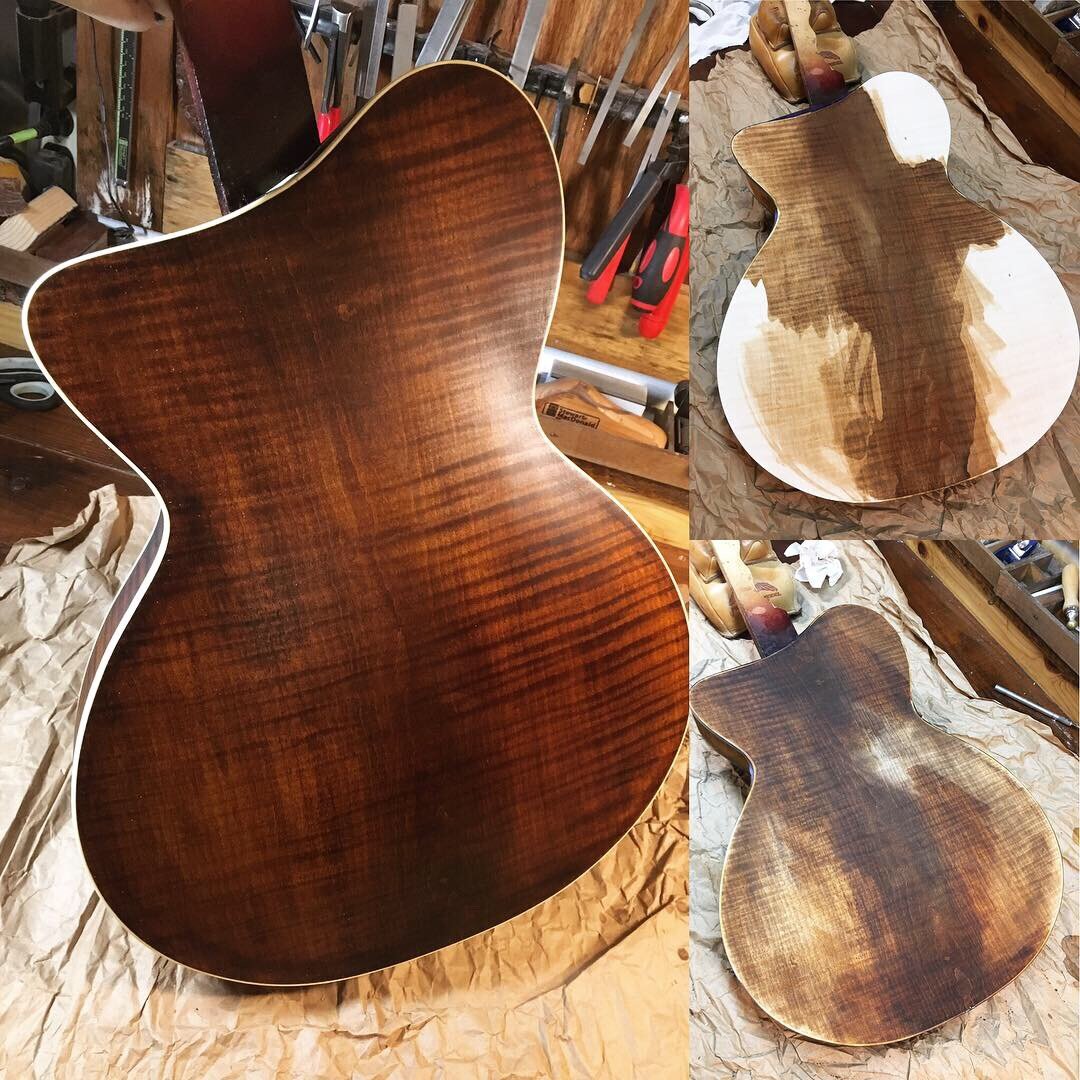
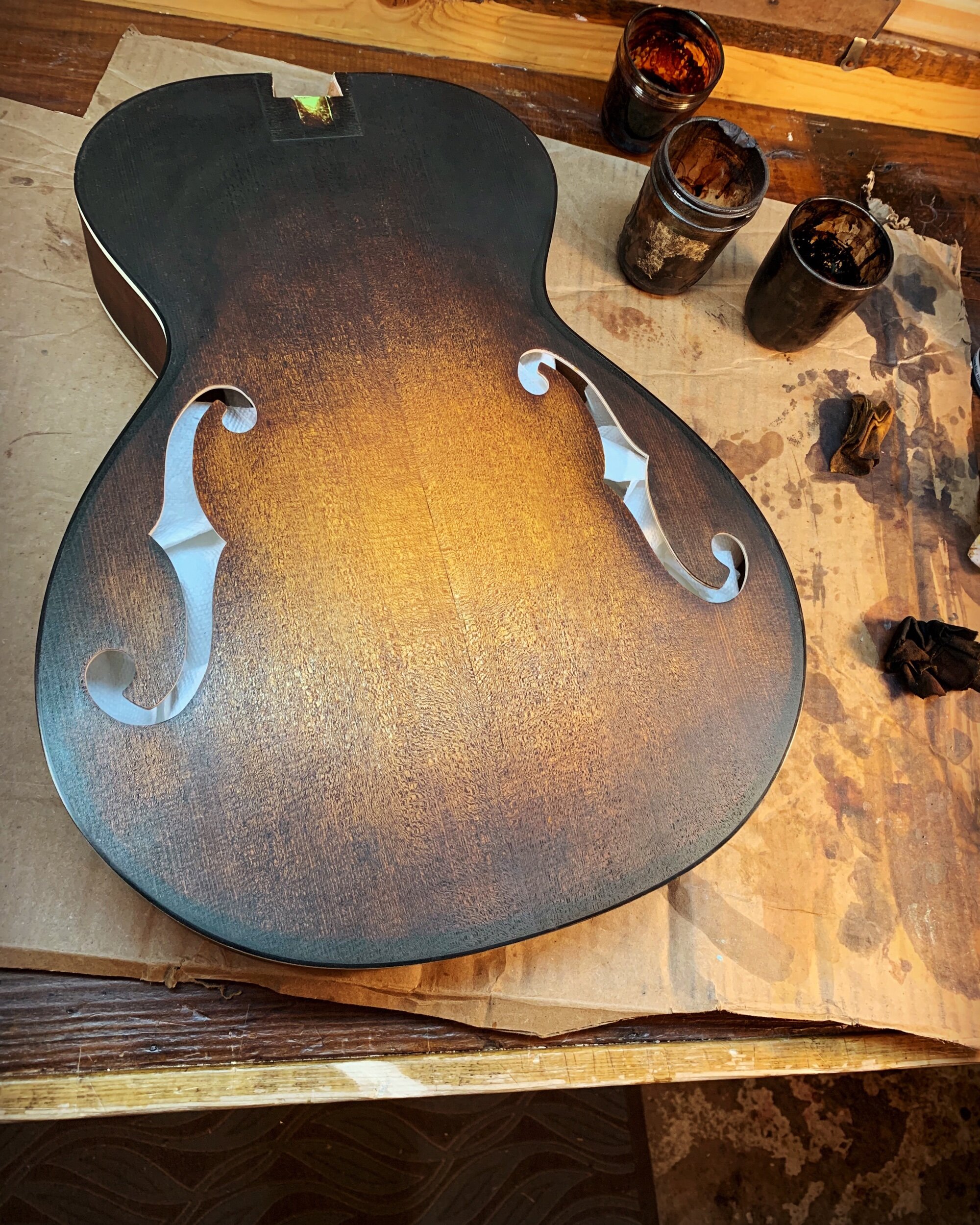
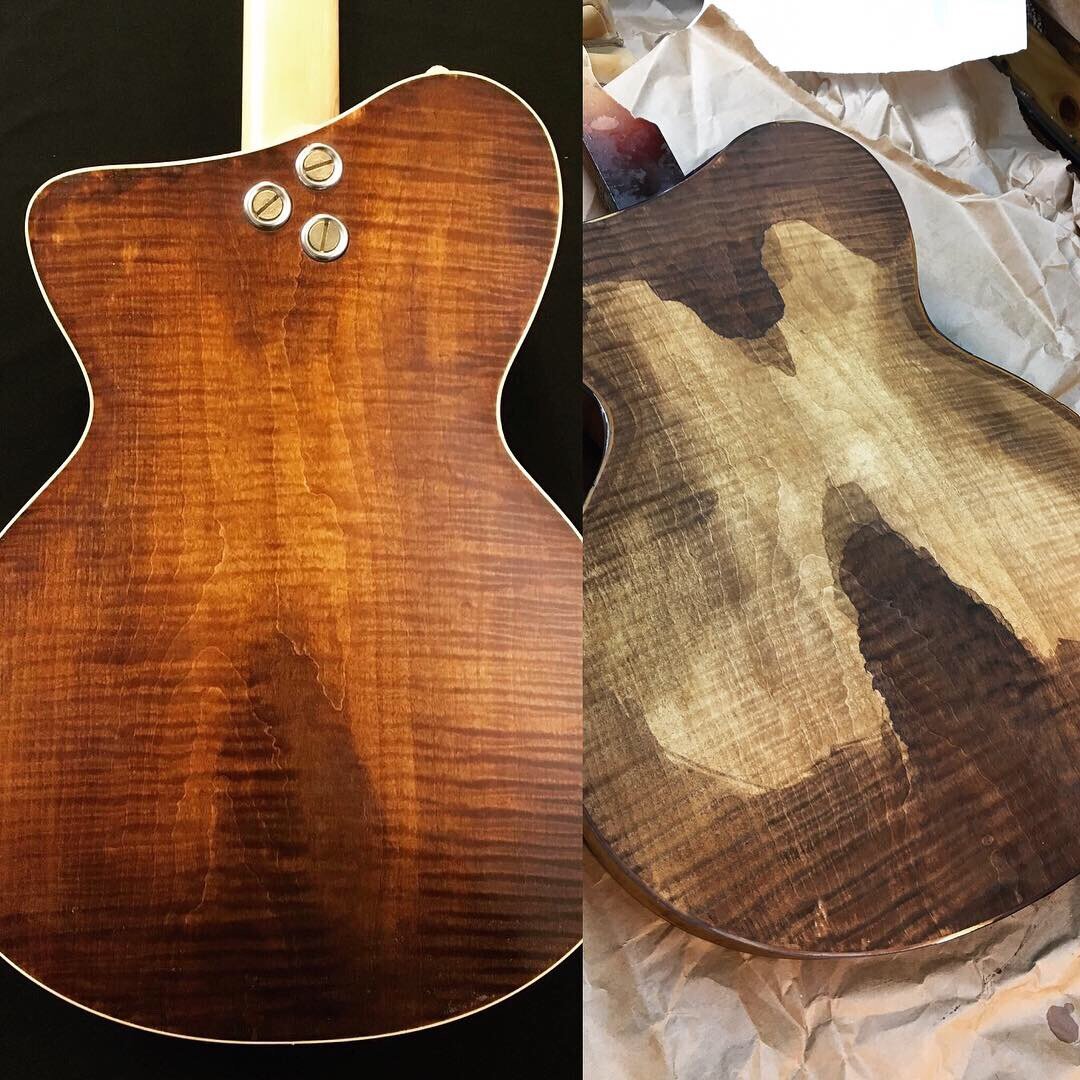
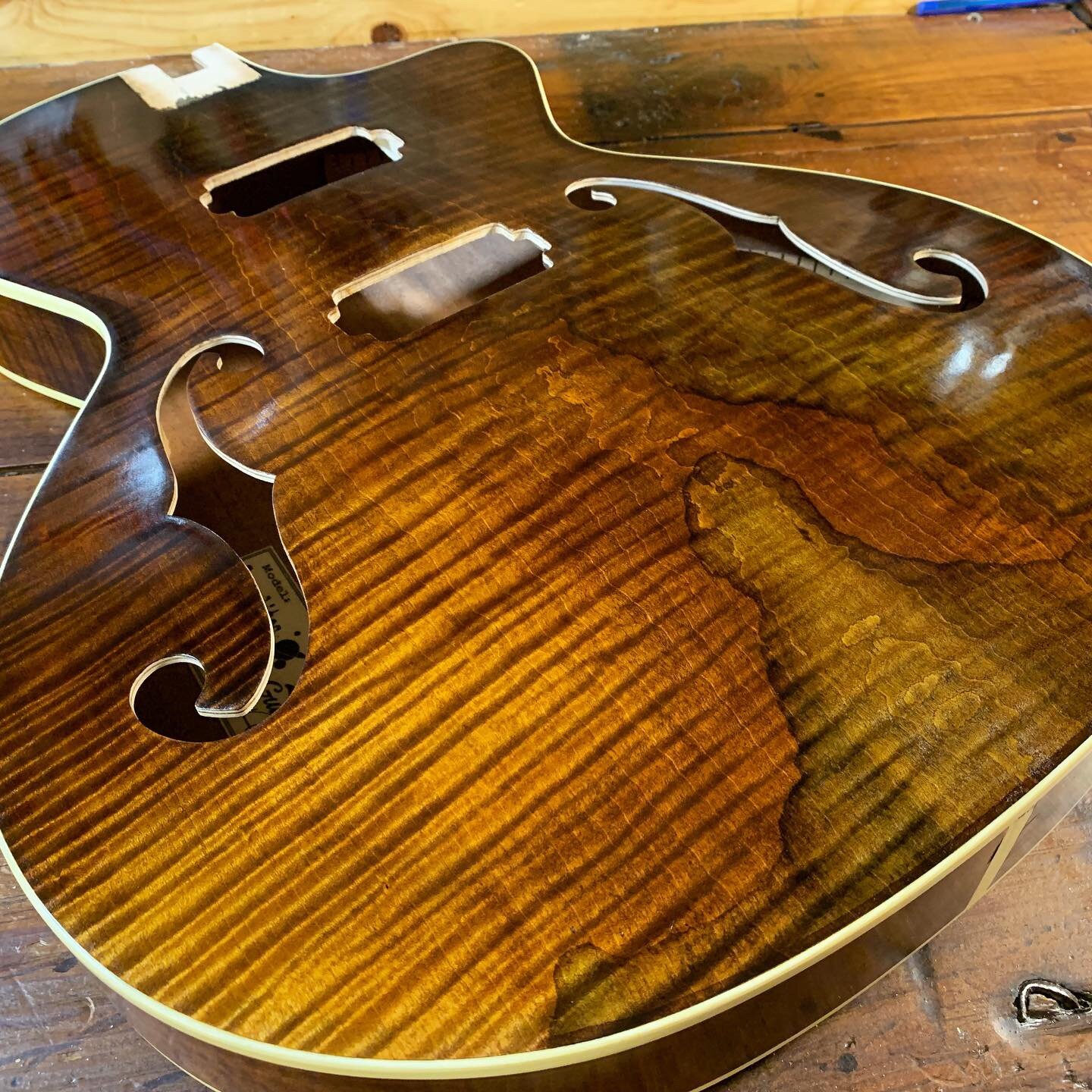
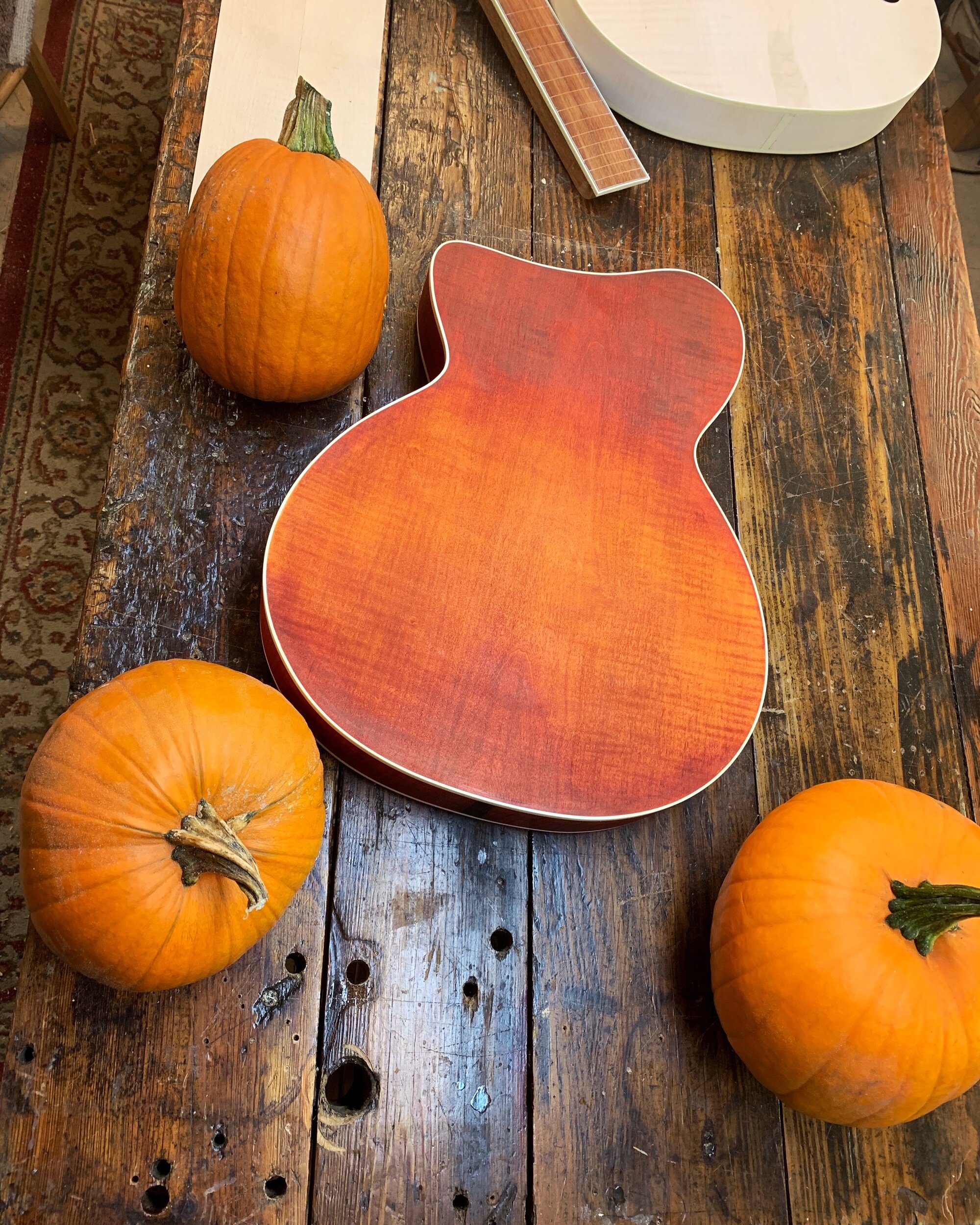
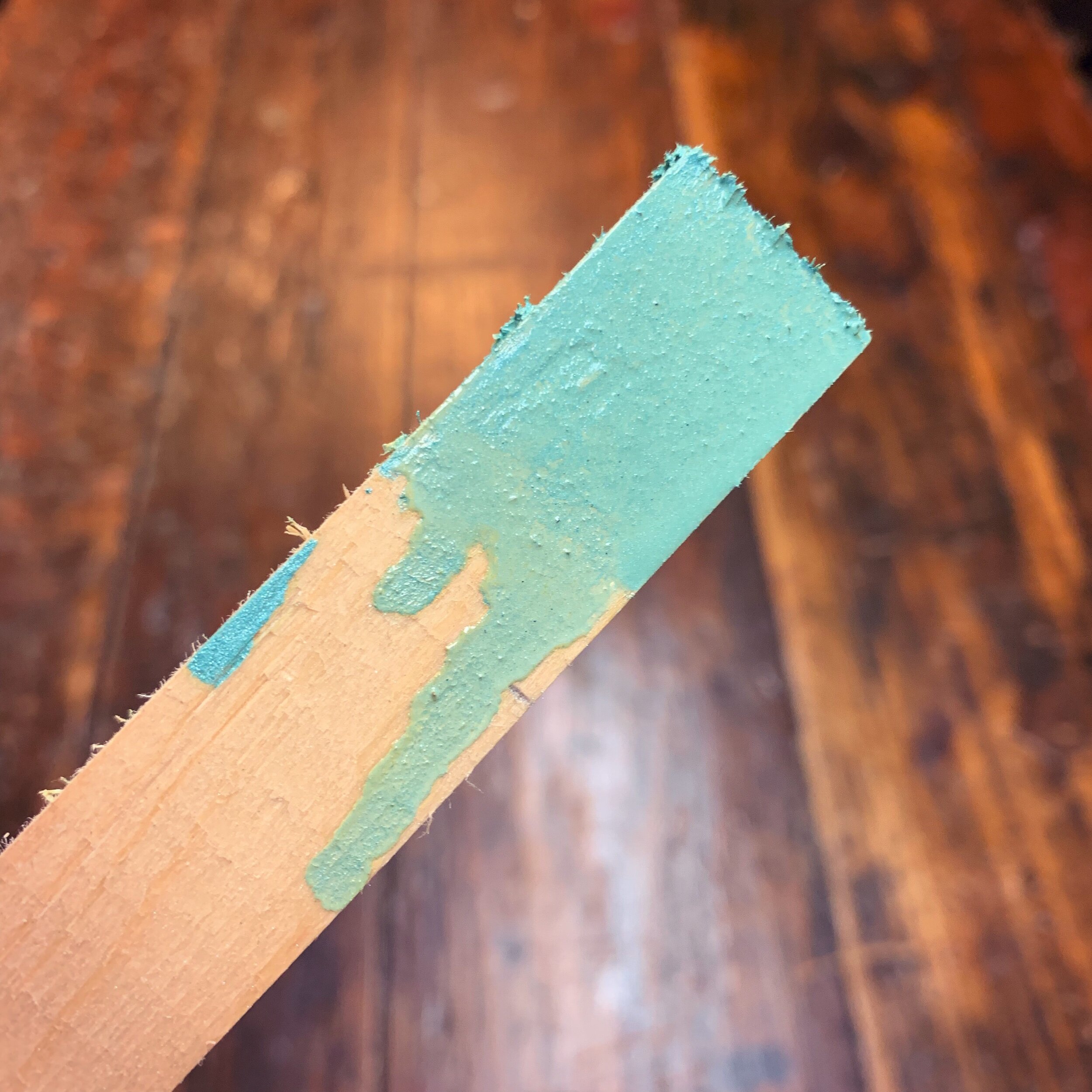
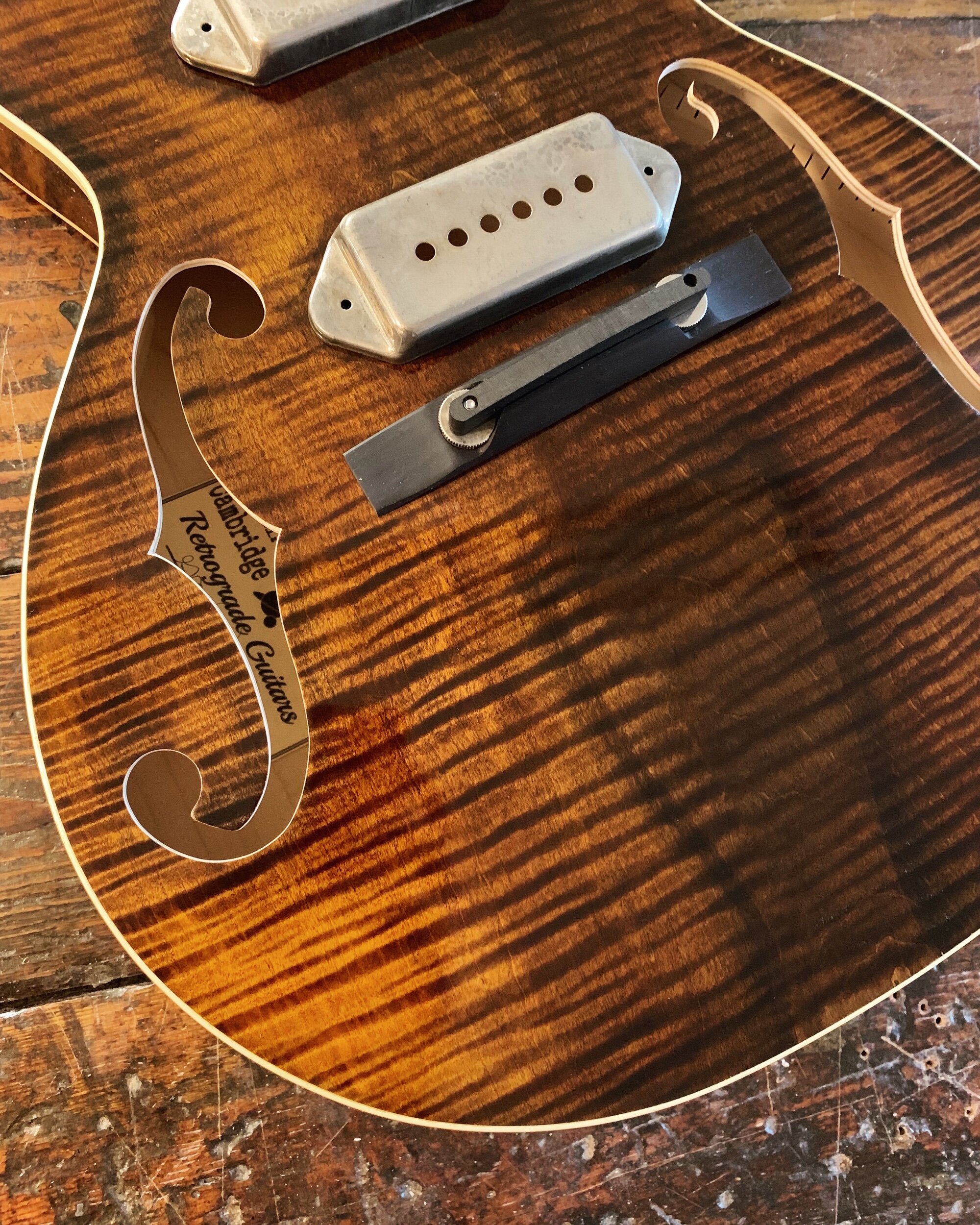
One of the variables that sets Retrograde Guitars apart is hand rubbed color, and the use of a Spirit Varnish finish
A Spirit Varnish is a home made varnish, created by boiling shellac and other resins in grain alcohol. It is an old world tradition, non-toxic, and all natural. The varnish is then applied by a technique known as French Polish.
Spirit Varnish is a material, French Polish is a technique.
I refer to my process as an Antique Spirit Varnish, as I use many different materials, grades of shellac, and oils. The desired result is a worn, aged patina. It is not simply a recipe. It is a process, using multiple materials at different stages. Materials included in the Antique Varnish process are:
Grain Alcohol, Super Blonde Shellac, Dark Garnet Shellac, Sandarac, Copal, Walnut Oil, Hemp Oil, Plaster of Paris, Pumice, Rotten Stone
The technique has been developed over years of restoring classical guitars. Sometimes a brand new show room shine is not the right look for a vintage instrument. Over time, I became comfortable with the materials and confident in my approach.
Prior to working with varnishes, I sprayed nitrocellulose lacquer for a larger company, for many years. I wore a full hazmat suit, mixed lacquer by the 5 gallon bucket, and spent hours a day in front of a giant spray booth. I have a deep love for finish, and it is this love that has led me to hand rubbed varnishes.
In the same way that I believe a laminate top is not a lesser instrument to the carved top, a hand rubbed finish is not inferior to an industrial finish. These are calculated choices to create a unique handmade instrument.
The following is an excerpt from a Bench Press Interview with The Fretboard Journal, where we discuss finish:
FJ: What’s the secret to a great guitar finish?
GN: ...For me a great finish is inviting, and makes you want to pick up the guitar. It makes you want to feel it with your fingers, and smell it, and wonder how it happened. It has to tell a story. I want it to be textural and painterly, and make the player feel comfortable, and at ease. I want to make an instrument that inspires musicians to create, not a trophy to keep in a case. I want the finish to wear as you play it, and break in like an old pair of boots. When you walk into my shop, I want it to smell like an artist’s studio, not an auto body shop.
All of my finishes are hand-rubbed; I don’t spray anymore. I cook up the spirit varnishes on my kitchen stove. The finish is my favorite part. Sometimes I feel like building the guitar is just an excuse for me to make more canvases to paint on. I think a great finish should feel effortless. Once it’s been labored over, the magic is gone. I do believe, most importantly, that the same rules apply in painting: You can’t do it wrong, until you know how to do it right. All of the best abstract painters evolved into it after having full control of their materials. I think by having a free and flowing process, you can actually charge the instrument with inspiration, and make a conduit for creativity. I think a lot about guitar finish.

